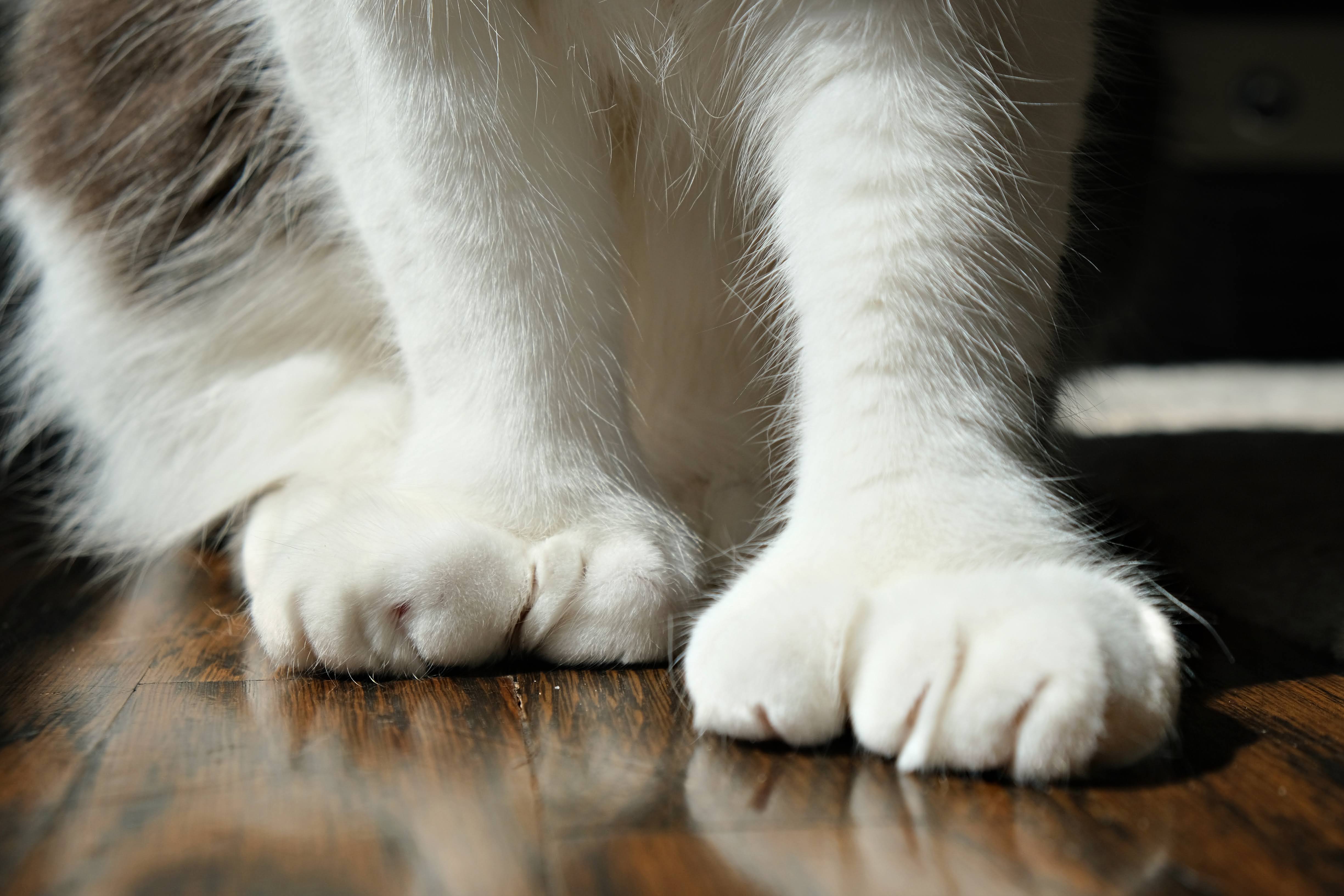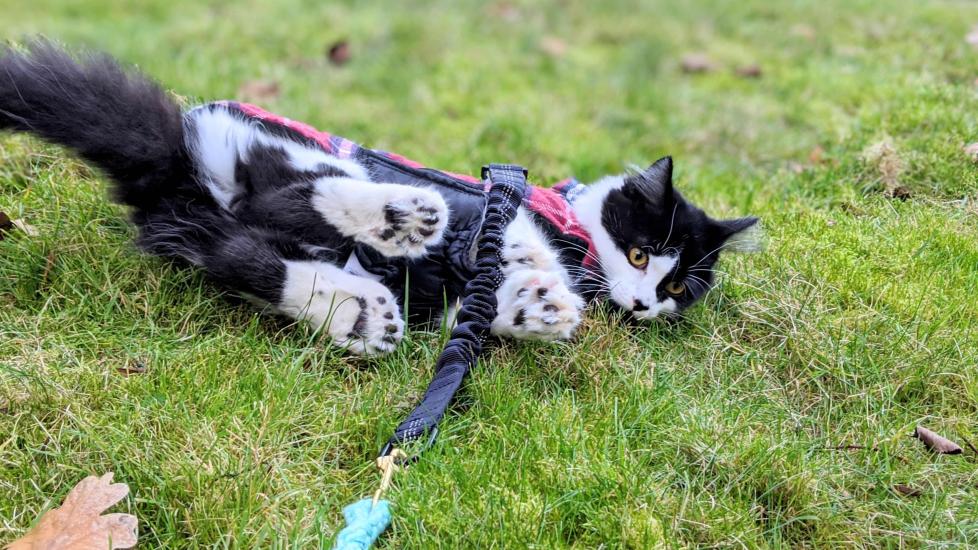Polydactyl Cats: What To Know About Cats With 'Thumbs'
If you find cat paws adorable (and who wouldn’t?), you might be fascinated to discover that some kittens are born with more toes than others. These felines are polydactyl cats, which means “cats with many digits.” Or perhaps you recognize these many-toed cats by one of their other monikers: Hemingway cats, mitten cats, or cats with thumbs.
So, why do these cats have so many toes? And just how many toes can a cat have? To get some answers, we turned to two experts: Anita Patel, DVM, a veterinarian and Area Medical Director at IndeVets, and Alejandro R. Caos, DVM, a small-animal veterinarian at The Vets.
Key Takeaways
- The term “polydactyl cat” refers to a feline that has more than the typical 18 toes.
- If a polydactyl cat mates with a non-polydactyl cat, each kitten they produce has a 50% chance of being polydactyl.
- While most polydactyl cats have only one or two additional toes, the world-record holders have an extra 10.
How Many Toes Does a Cat Have?

Normally, cats have 18 toes—five on each front paw and four on each back paw. This usually includes a dewclaw on each front paw but not on the back.
“Polydactyly” refers to the presence of extra digits, even if it’s just one additional toe or an extra dewclaw. “Extra toes can be found on the front or hind limbs,” Patel says.
It’s most common for extra toes to form on the inside of the paw, which is the pre-axial (or thumb) side. Less commonly, extra digits form on the outside of the paw (the post-axial or pinky side) or meso-axial (in the middle). Extra digits don’t always come in pairs, meaning your cat’s paws could be asymmetrical.
So, how many toes can a cat have? An orange tabby named Jake is one kitty who holds the record for the most toes on a cat, with seven digits on each paw (that’s 28 toes total!). In Minnesota, the polydactyl cat Paws shares Jake’s title of world-record polydactyl cat.
Why Are Some Cats Polydactyl?
Why do Jake and Paws have so many toes? Genetics play a big role, Patel says.
Polydactylism is an autosomal dominant trait, with some additional complexities. This means that only one parent needs to carry a gene for polydactyly for some kittens in a litter to be born with extra toes.
It isn’t fully understood why certain polydactyl cats have only one additional toe while others have many. “The genetic basis of polydactylism is complex,” Caos explains. It’s an autosomal dominant trait that has incomplete penetration and variable expression, which contributes to the various toe configurations a polydactyl cat can have.
The origins of polydactyly in cats aren’t fully known, either. However, it’s believed that early settlers and sailors may have brought polydactyl cats with them to the Americas, Caos says. After all, their larger-than-normal paws could make polydactyl cats exceptionally skilled at catching rodents.
Of course, any benefits that extra toes might provide, such as enhanced balance, grip, and hunting abilities, depend on the individual cat. Caos says that polydactyly in cats is more likely due to chance than an evolutionary adaptation. “Polydactylism is not considered a crucial adaptation for cats’ survival in the wild,” he says. “Most cats, regardless of the number of toes, are well adapted to their natural habitats.”
Are Polydactyl Cats Rare?
Polydactyl cats aren’t rare. “When a polydactyl cat breeds with a non-polydactyl cat, the offspring have a 50% chance of inheriting the polydactyl gene,” Caos says. “If both parent cats are polydactyl, the likelihood of their offspring being polydactyl increases.”
The most common form of polydactylism in cats is one or two extra toes on the front paws, resembling thumbs or mittens. Cats with many extra toes, like Jake and Paws, are considered more unusual.
Which Breeds of Cat Are Polydactyl?

Compared to other cat breeds, the Maine Coon and Pixiebob cat breeds are the most likely to have extra toes. “Maine Coon cats are known for their large size and tufted ears, and the presence of extra toes adds to their unique appearance,” Caos shares. However, any cat can be born with extra toes, depending on their genetic makeup and gene expression.
You also may have heard of the “American Polydactyl,” but this isn’t a breed. Rather, the term refers to descendants of polydactyl cats in Key West, Florida. Novelist Ernest Hemingway, a notable past resident of Key West, acquired a six-toed cat named Snow White, who bred and passed on the polydactyly genes. Today, Hemingway’s estate in Key West is home to over 60 polydactyl felines.
Do Polydactyl Cats Need Extra Care?
Caring for a polydactyl cat isn’t all that different from caring for a cat with 18 toes. However, there are a few considerations to keep in mind:
Nail Care
Because polydactyl cats have more nails than typical felines (including some that might never touch the ground!), they’re at an increased risk for nail overgrowth. Overgrown nails can cause discomfort, infection, and become snagged on surfaces. Regular nail trimming will help prevent these issues.
Paw Hygiene
“Extra toes in polydactyl cats means there may be additional spaces between the toes where dirt, debris, or litter can accumulate,” Caos says. Inspect your cat’s paws regularly and wipe them clean as needed.
Mobility and Adaptation
Polydactyl cats typically don’t experience mobility issues due to their extra toes. However, if your cat has unusually large or unique toe formations, keep an eye on their mobility. They should be able to walk, run, and jump without difficulty or pain.
“If you notice any limping, favoring of certain paws, or changes in mobility, it’s best to consult a veterinarian for further evaluation,” Caos recommends. Extra toes that are causing problems can be surgically removed.
Featured Image: Janelle Leeson
